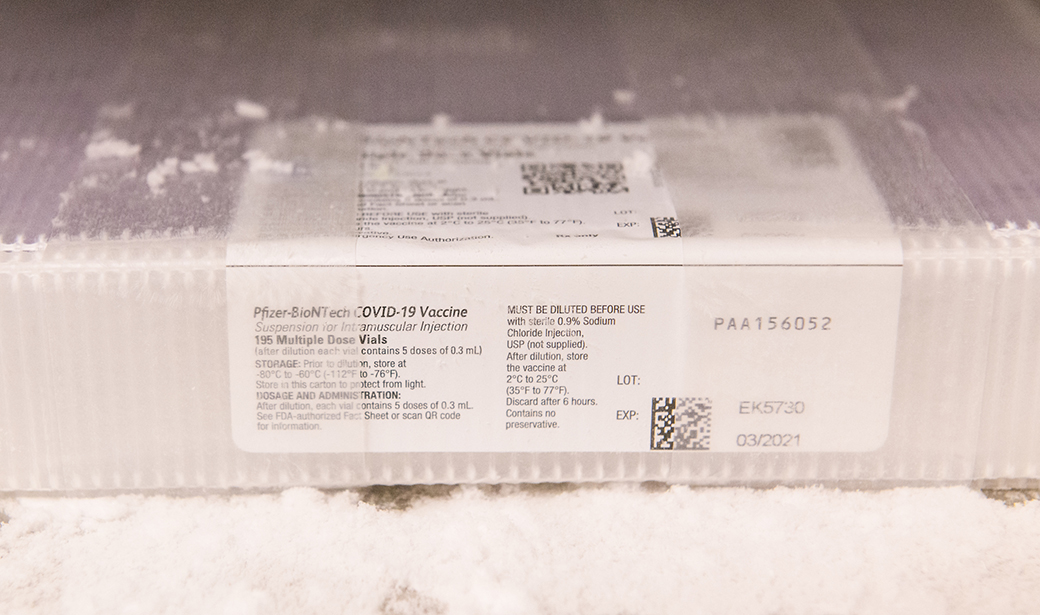The first two vaccines that were made available for use in the United States use messenger RNA, or mRNA, technology. Learn how they work and get details on their effectiveness and safety.
How do mRNA vaccines work?
Vaccines made by Pfizer-BioNTech and Moderna were the first to be granted emergency use authorization by the U.S. Food and Drug Administration. (The Pfizer vaccine is now fully FDA approved.) They’re not identical, but they attack the disease using the same method, and both require two doses for the best protection from the COVID-19.
Unlike vaccines that put a weakened or inactivated virus in your body to activate an immune response, the two COVID-19 vaccines use messenger RNA, or mRNA, to deliver a message to your immune system. In this case, the message tells your cells to create a harmless piece of a specific spike protein that’s found on the surface of COVID-19. Your body recognizes that the spike protein doesn’t belong and starts creating antibodies to remove it. In doing so, your body’s immune system becomes prepared to fight the virus if you encounter it.
It’s important to know that mRNA doesn’t affect your genes in any way because it never enters the nucleus of cells, where your DNA is kept. After the mRNA does its job, it breaks down and is flushed out of your system within hours. It’s also important to know that although mRNA technology for vaccines is new, the mRNA technology itself isn’t. Therapies using mRNA have been around for years and are currently being used to treat cancer and viral diseases.
Are mRNA vaccines effective?
The efficacy of vaccines is proven through phases of tests on increasingly large numbers of human volunteers. The Phase 1 trial usually includes 20-100 volunteers. If no serious side effects are reported, the trial moves to Phase 2, which typically involves several hundred volunteers and further refines the correct dosage. If no serious side effects emerge, it’s on to Phase 3, which includes thousands of volunteers split into two groups — one that receives the drug and the other that receives a placebo.
In Phase 3, the Pfizer-BioNTech trial for adults included more than 44,000 people, and the Moderna Phase 3 trial had more than 30,000. The volunteers, initially all adults, represented a range of races and ethnicities. The researchers kept track of how many people — both those who received the vaccine and the placebo group — came down with COVID-19.
Both vaccines proved to be more than 90% effective in preventing symptomatic cases of COVID-19. The FDA reviewed the data from both trials to ensure it was accurate.
As new variants, such as delta and omicron, emerge, the vaccines' ability to prevent symptomatic cases of COVID-19 might lessen. But they remain highly effective at preventing serious illness, hospitalization and death.
Are mRNA vaccines safe?
All COVID-19 vaccines have to meet the same rigorous FDA safety standards as any other vaccine.
You may be wondering then, how these COVID-19 vaccines were developed so quickly compared to the vaccines of the past, which took years to create. The speed happened on the front end in the development of the vaccines. Because of massive public and private funding, many of the financial hurdles that can delay research projects were removed. But the testing and approval processes were no different than those for other vaccines in the past.
The reported side effects of the mRNA vaccines were temporary symptoms such as fever and muscle aches, similar to what some people experience after getting other vaccines. Most common side effects of a vaccine are identified in studies before the vaccine is licensed. In rare cases, adverse side effects may not be detected in these studies, which is why the U.S. vaccine safety system continuously monitors for side effects after a vaccine is licensed.
In addition to the standard safety monitoring systems, there is an added layer of scrutiny for the COVID-19 vaccines to give the Centers for Disease Control and Prevention real-time information as Americans get vaccinated. The CDC has developed “V-safe,” a smartphone-based health checker that allows people to report any adverse side effects after getting the vaccine.



